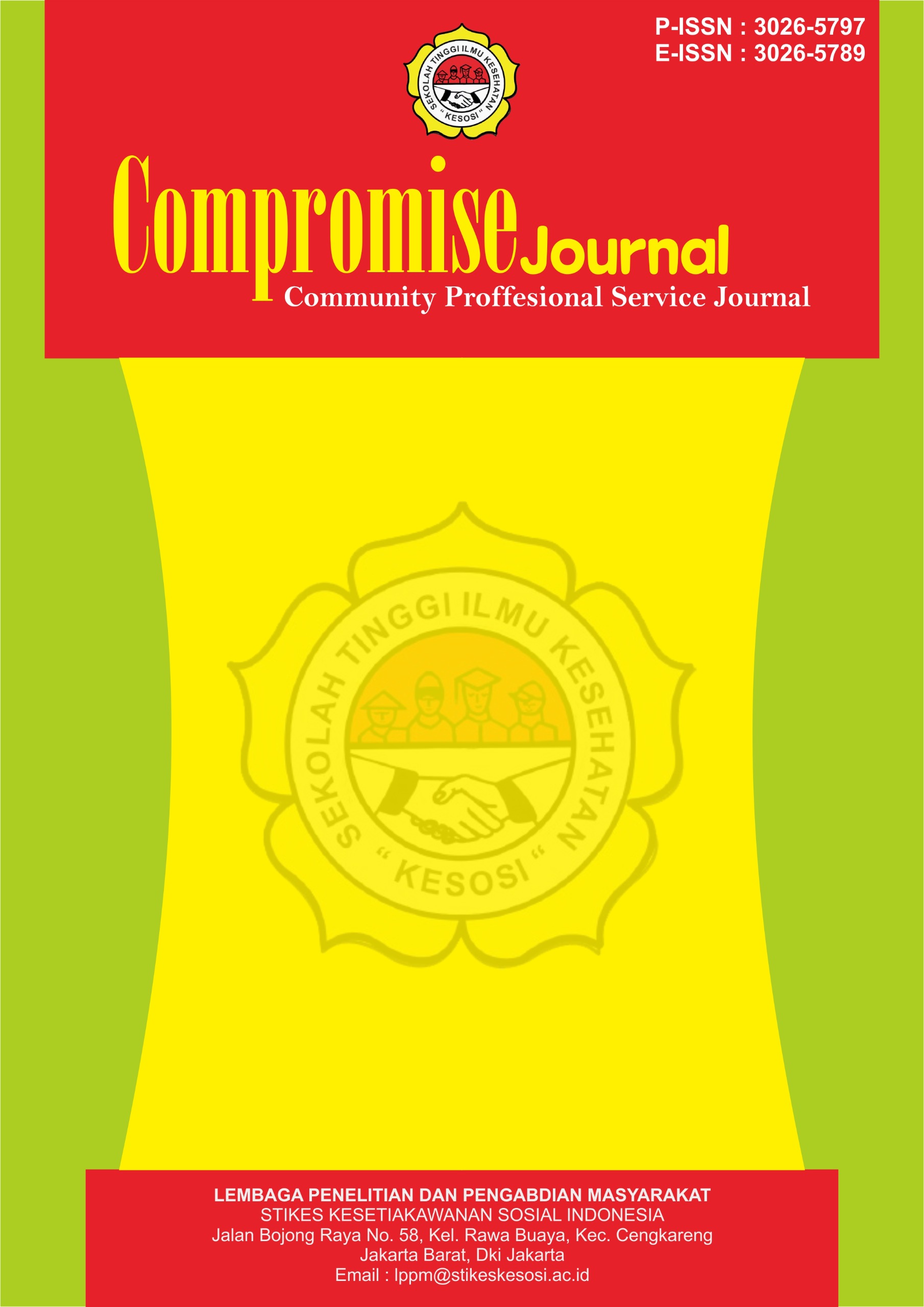Pemberdayaan Buah Asam Jawa (Tamarindus Indica L.) Menjadi Sediaan Gel Sistem Fitosom sebagai Antioksidan
DOI:
https://doi.org/10.57213/compromisejournal.v3i1.561Keywords:
Empowerment, Tamarind Fruit, Gel, PhytosomeAbstract
Empowering the community using one of the cooking spices to become something which has high selling power because of its effectiveness will increase people's enthusiasm for using it. Tamarind fruit has bioactive compounds which often used as natural antioxidants and will be made into phytosome system gel preparations which can improve better penetration of drugs into the skin. The aim of this service was that the community is expected to provide education about tamarind fruit in Klambir V Village, Medan, Indonesia. This community service method was carried out using leaflets, modules, power points and presentations to the community. The result of this service was an increase in public knowledge of tamarind fruit as an antioxidant by 87%.
References
Buanasari, Sugiyo, W., & Apriyanti, A. C. (2022). Aktivitas antioksidan ekstrak etanol daun asam jawa (Tamarindus indica L.) dengan metode DPPH. JFSI, 1(1), 19–24.
Costa, R., & Santos, L. (2017). Delivery systems for cosmetics – From manufacturing to the skin of natural antioxidants. Powder Technology, 322, 402–416.
Elsayed, M. M. A., Abdallah, O. Y., Naggar, V. F., & Khalaffah, N. M. (2006). Deformable liposomes and ethosomes: Mechanism of enhanced skin delivery. International Journal of Pharmaceutics, 322, 60–66.
Haerani, A., Chaerunias, A. Y., & Subarnas, A. (2017). Antioksidan untuk kulit. Farmaka, 16(2), 135–151.
Ramadon, D., & Mun’im, A. (2017). Pemanfaatan nanoteknologi dalam sistem penghantaran obat baru untuk produk bahan alam. Jurnal Ilmu Kefarmasian Indonesia, 14(2), 118–127.
Downloads
Published
Issue
Section
License
Copyright (c) 2025 Compromise Journal : Community Proffesional Service Journal

This work is licensed under a Creative Commons Attribution-ShareAlike 4.0 International License.






